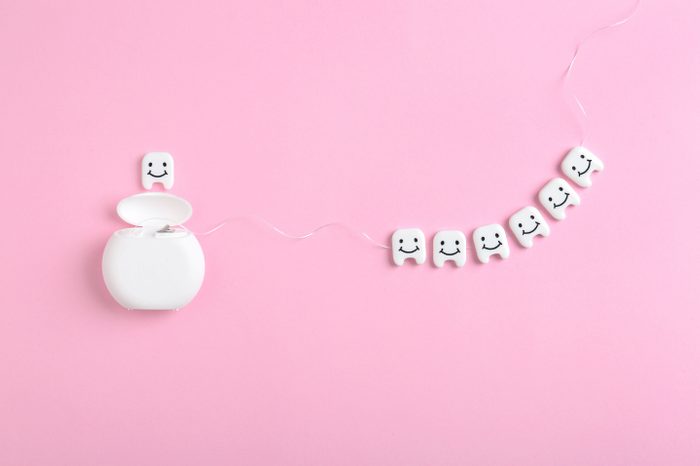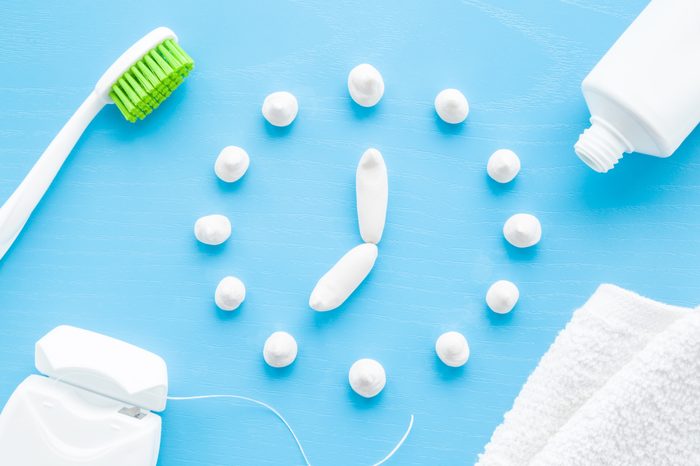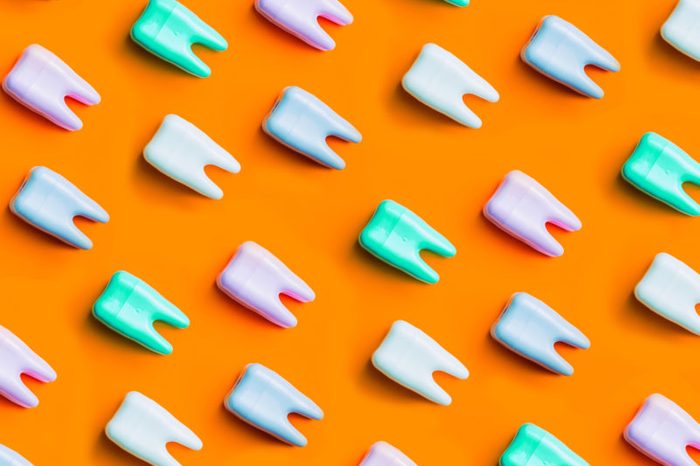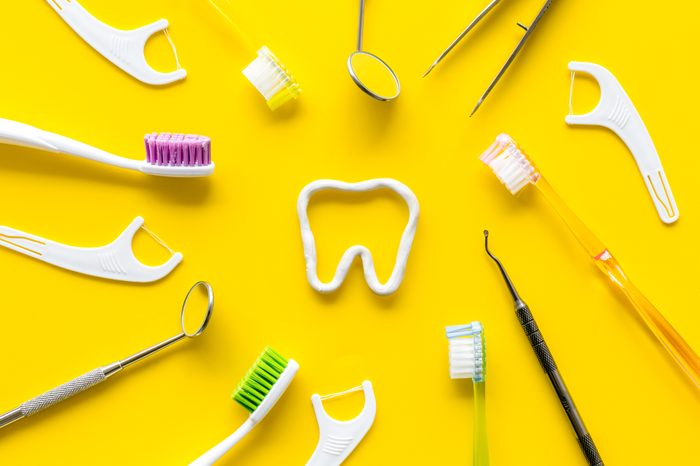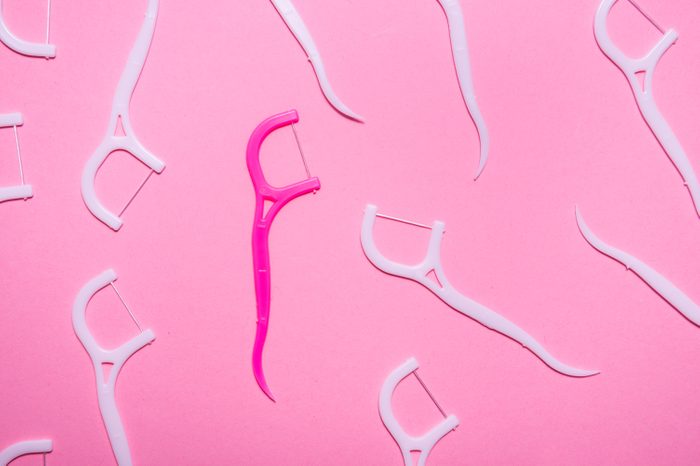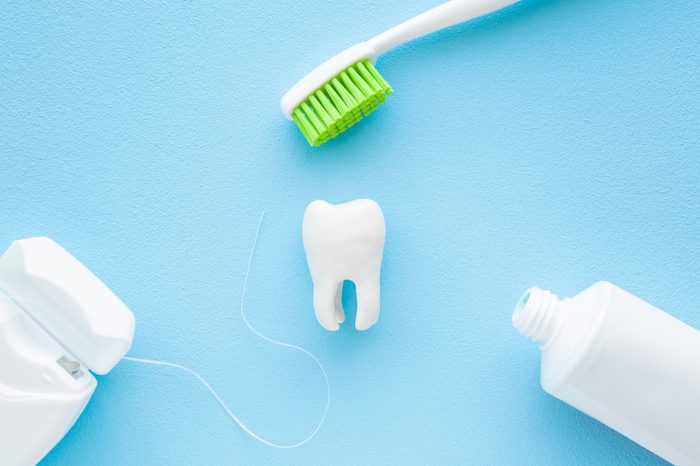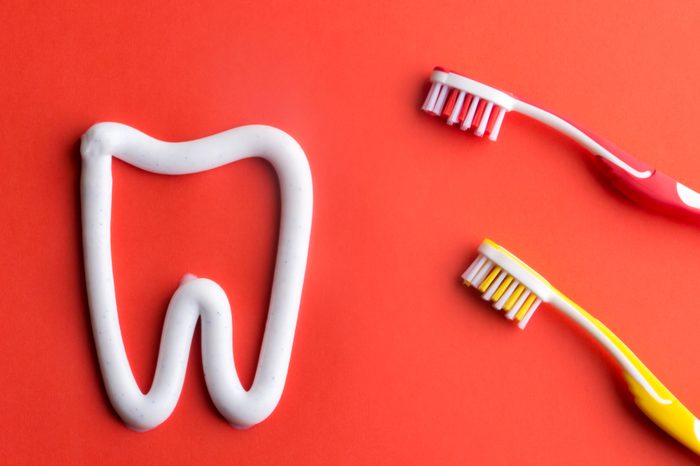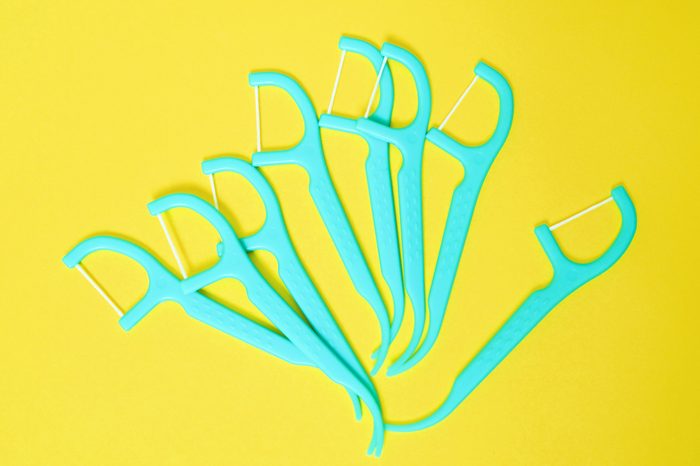Tetiana Shumbasova/Shutterstock
You’re sawing or snapping into your gums
Being too aggressive can damage your gums and cause gingival clefts, which are trauma in the gum tissue, Dr. Maser warns. Once the floss is between your teeth, he advises sliding the floss sideways up the tooth, not sawing at the base of it. And avoid snapping the floss with force into your gums which can cause your gums to recede. You want to work in gentle, smooth motions that don’t traumatize the soft tissue. “If people find it difficult to pull the floss out between the teeth, I advise them to pull it out toward the cheek,” Dr. Chern says.
azazello photo studio/Shutterstock
You’re stopping because you see blood
“Maybe the biggest misunderstanding people have is seeing blood when they floss and thinking they should stop,” Dr. Strandburg says. “Actually, bleeding is a sign that your gums are unhealthy and that you should be flossing more and with better form.” When you see blood in the sink, it’s not necessarily a call for concern. “Infected gum material will normally bleed when flossed and this is an indication that one is stimulating the diseased tissue to react and start to shrink and become normal,” Dr. Maser says. Consult your dentist to find out if bleeding is problematic, but the fact that your gums are bleeding isn’t an indicator that you should give up the floss. Make sure you’re keeping your twice-a-year dentist appointments because there are several health conditions a dentist often spots first.
You just can’t reach all the spots
Sometimes your dental work, the size of your mouth, or just limited coordination make flossing an awkward task. “I have been recommending the Waterpik cordless water flosser which can be used in conjunction with flossing for hard to reach areas,” Dr. Chern says. Using a water flosser can replace the standard string because the water reaches deeper areas and breaks up bacterial colonies and flushes them out thoroughly, Dr. Strandburg explains. (He likes the Waterpik Sonic-Fusion Professional Flossing Toothbrush.) “It may be easier for the patient to direct a flow of water between the teeth rather than use their fingers and hands to manipulate the floss into the proper position,” Dr. Maser says. Now that you’ve worked on proper flossing, here’s how to brush up on your brushing technique.





















